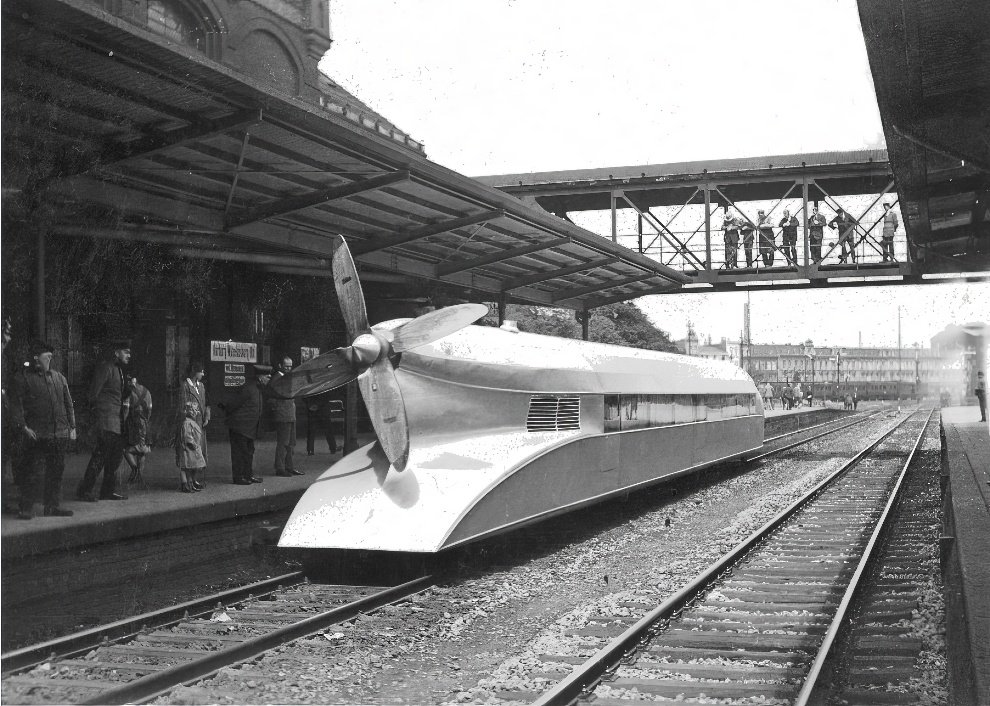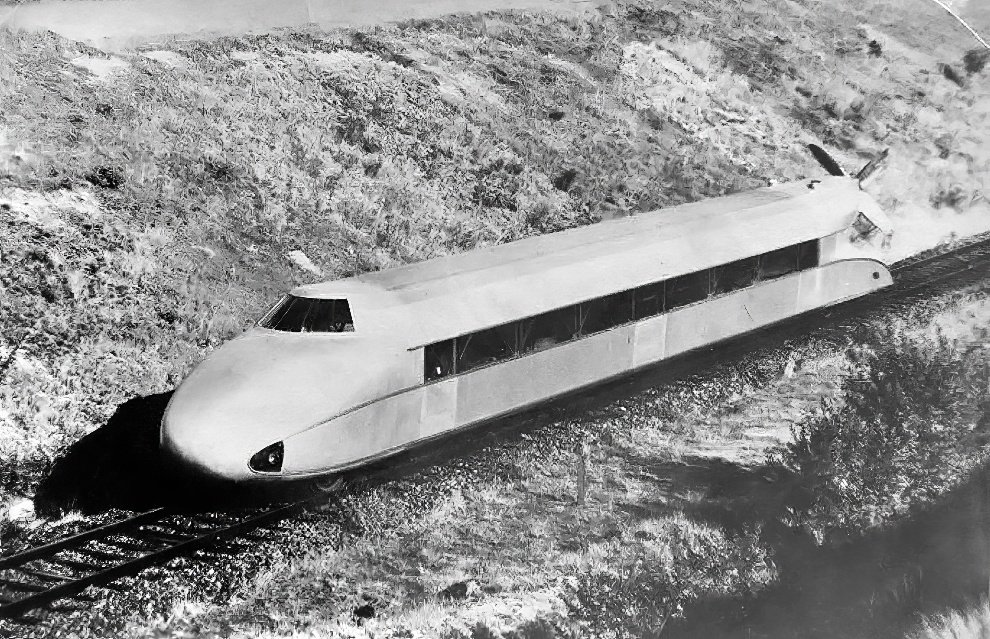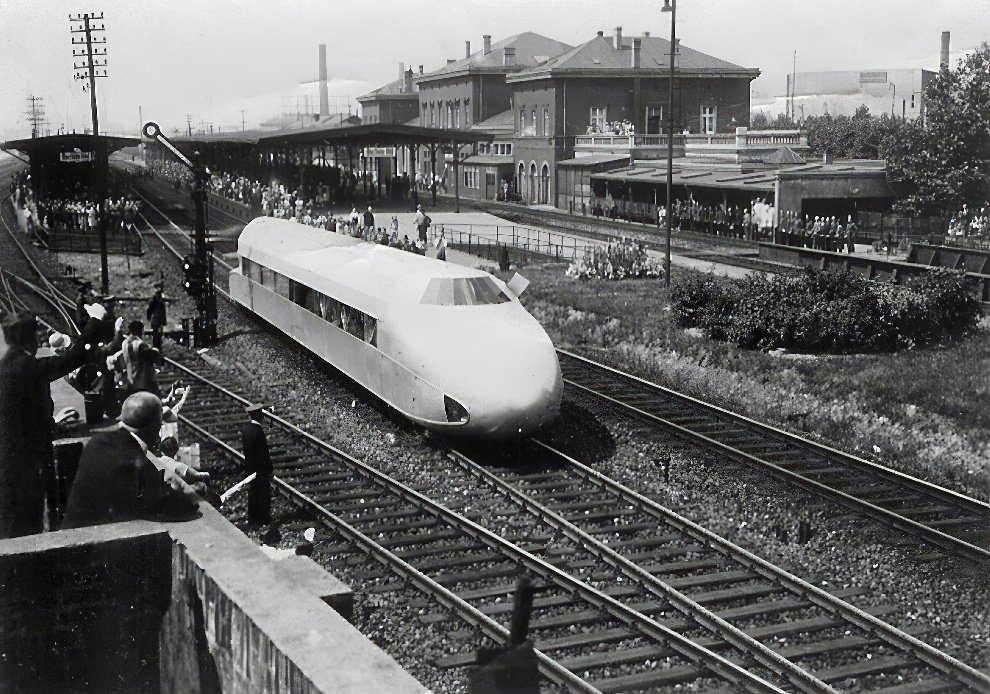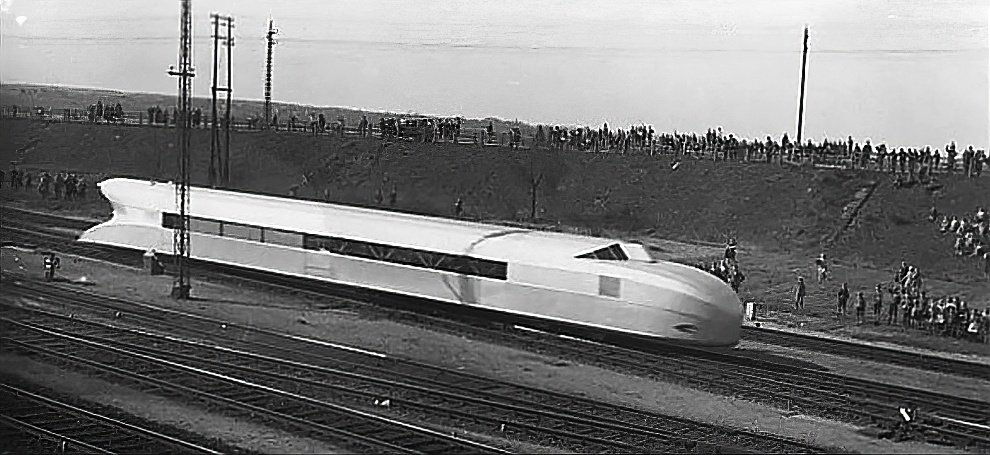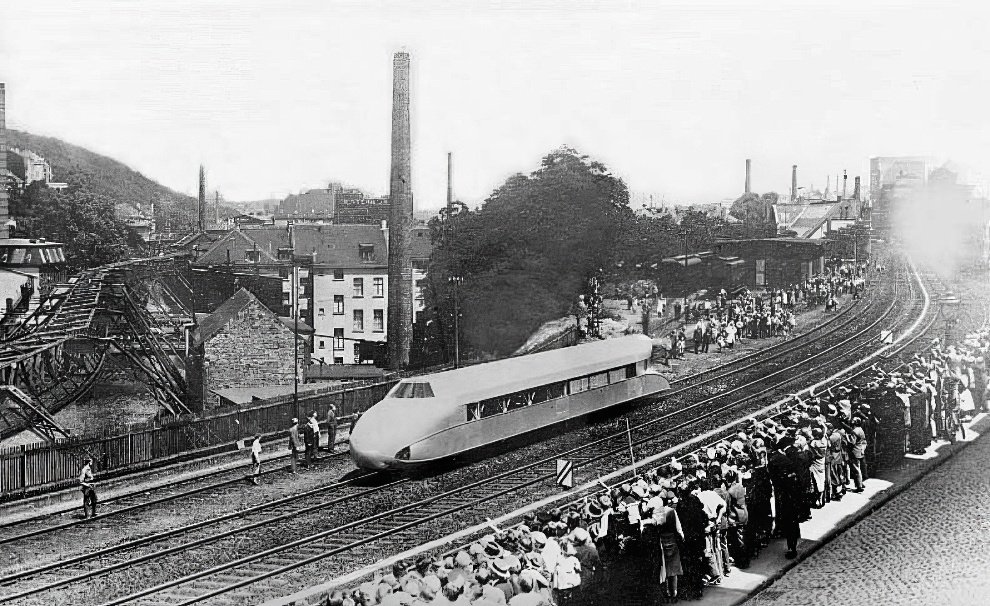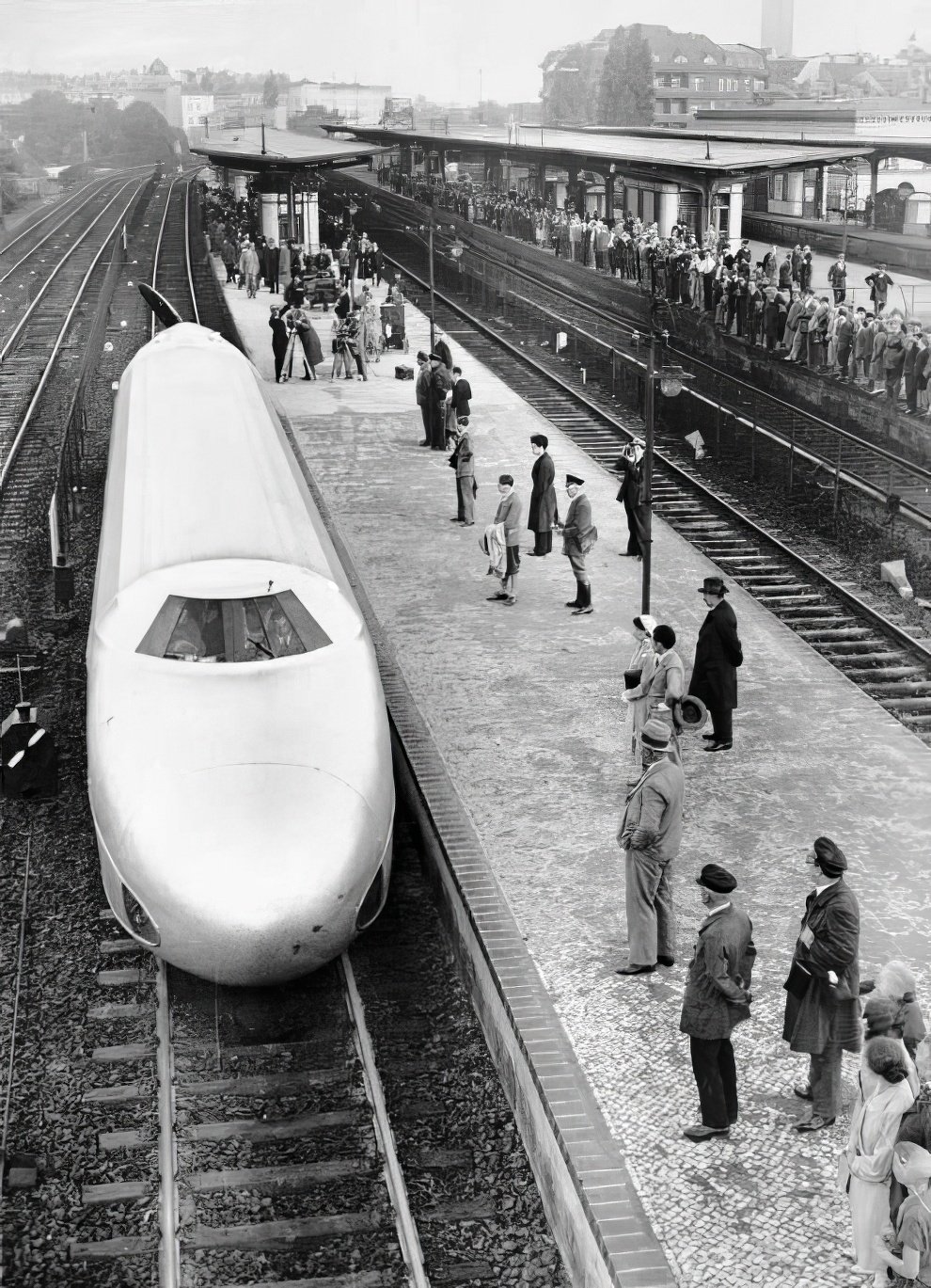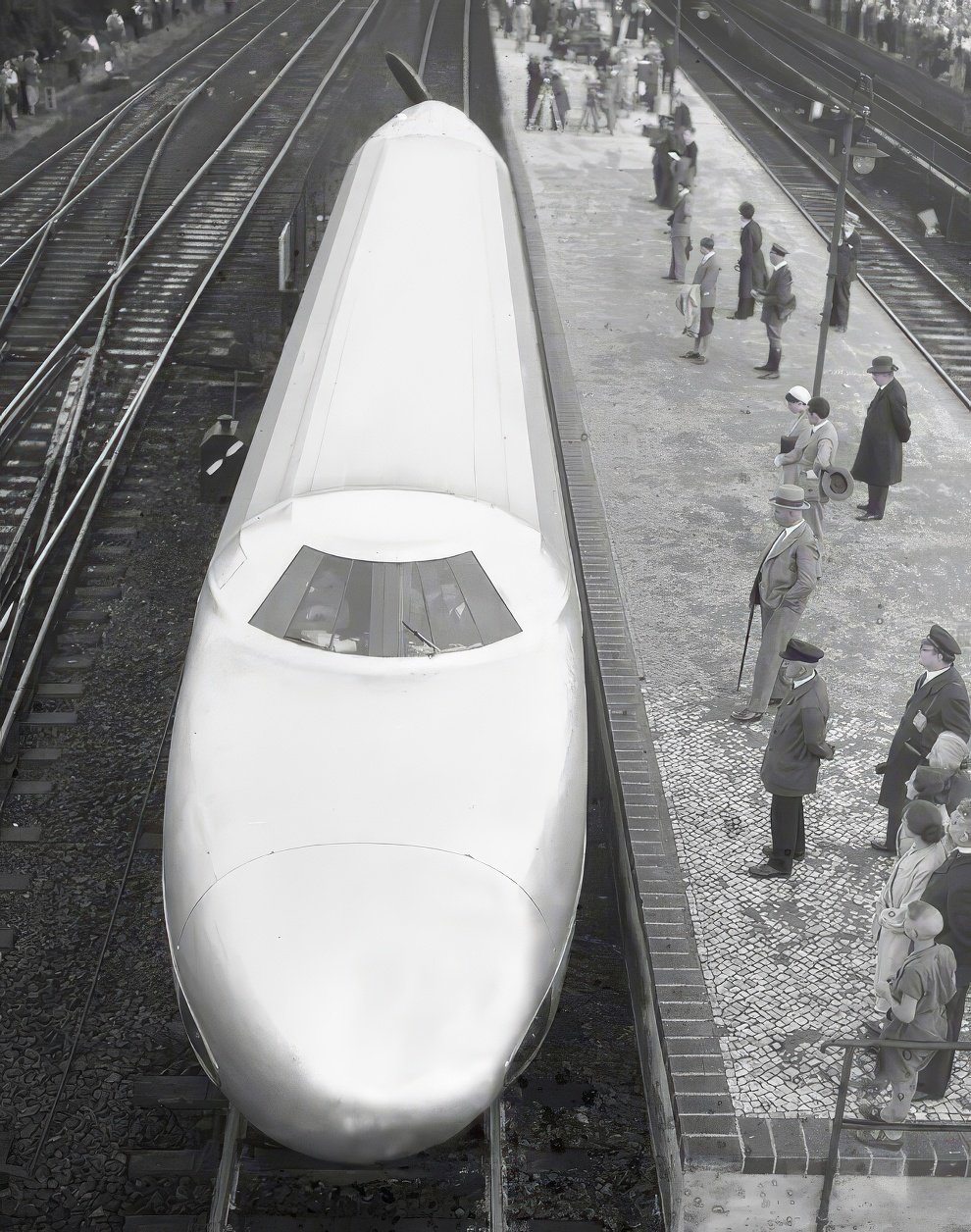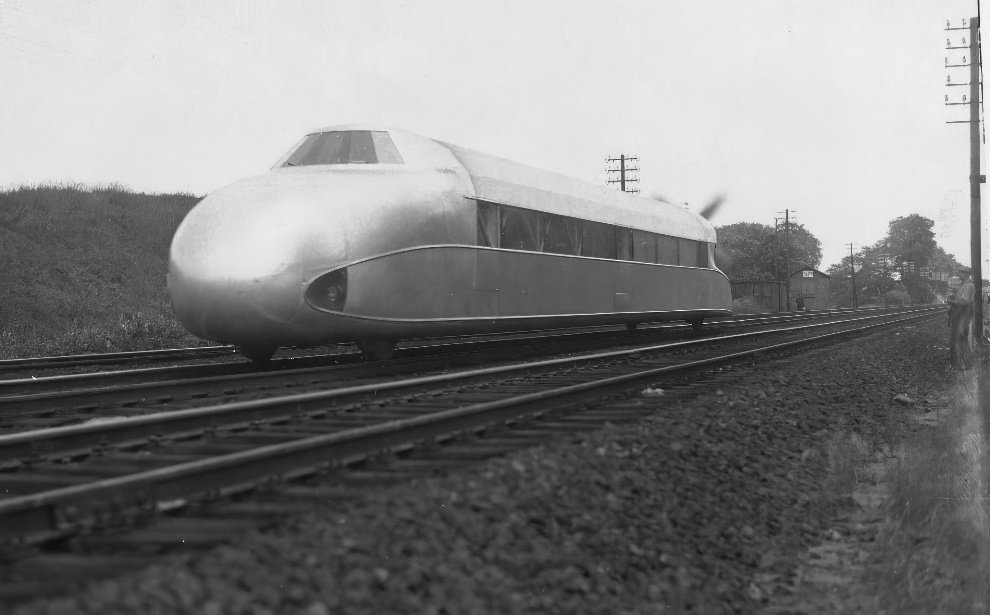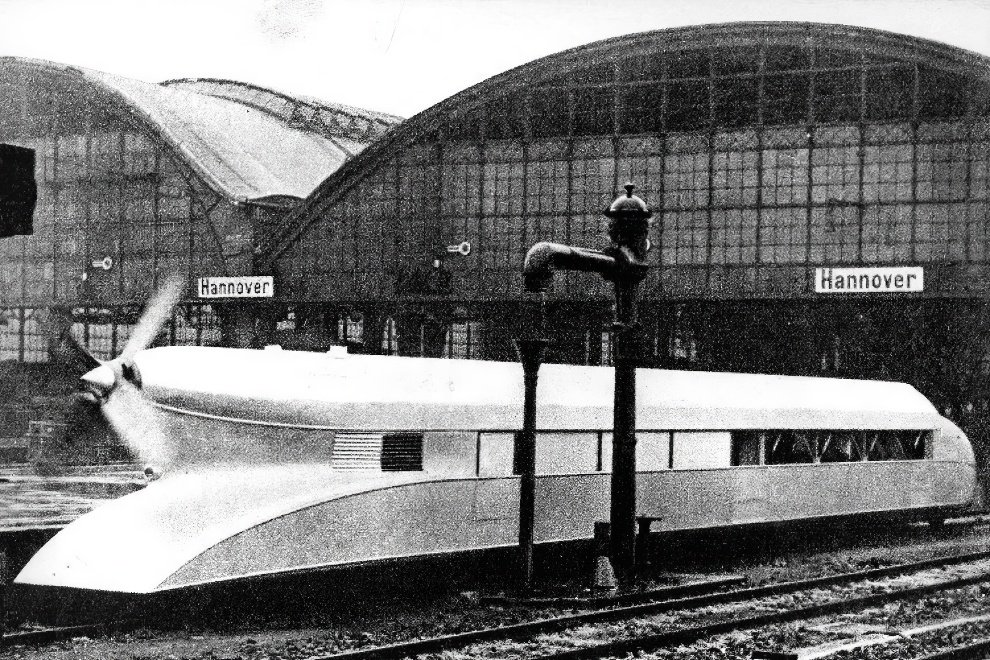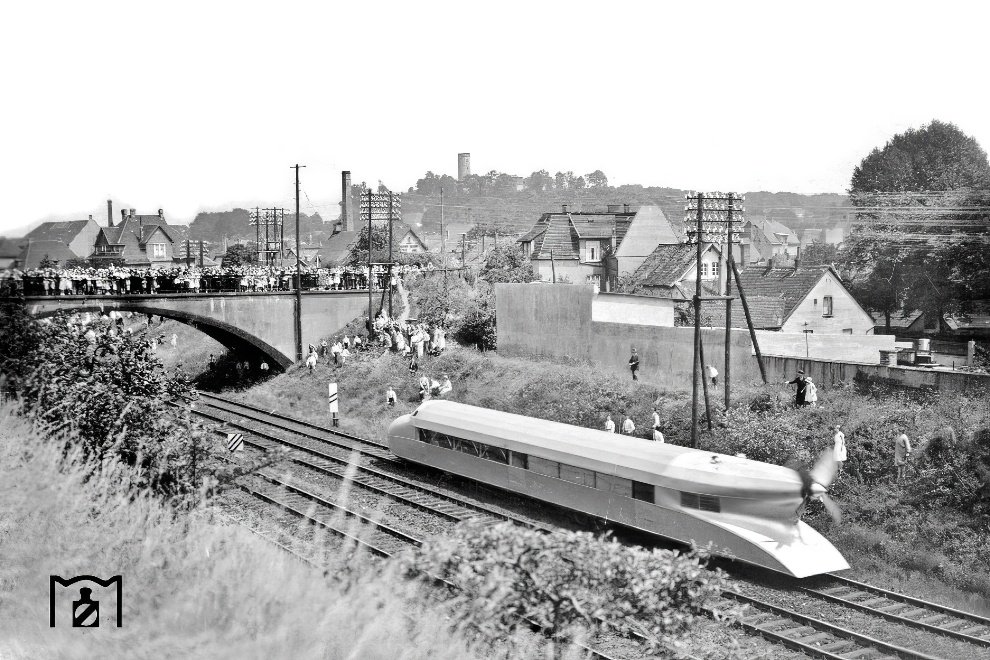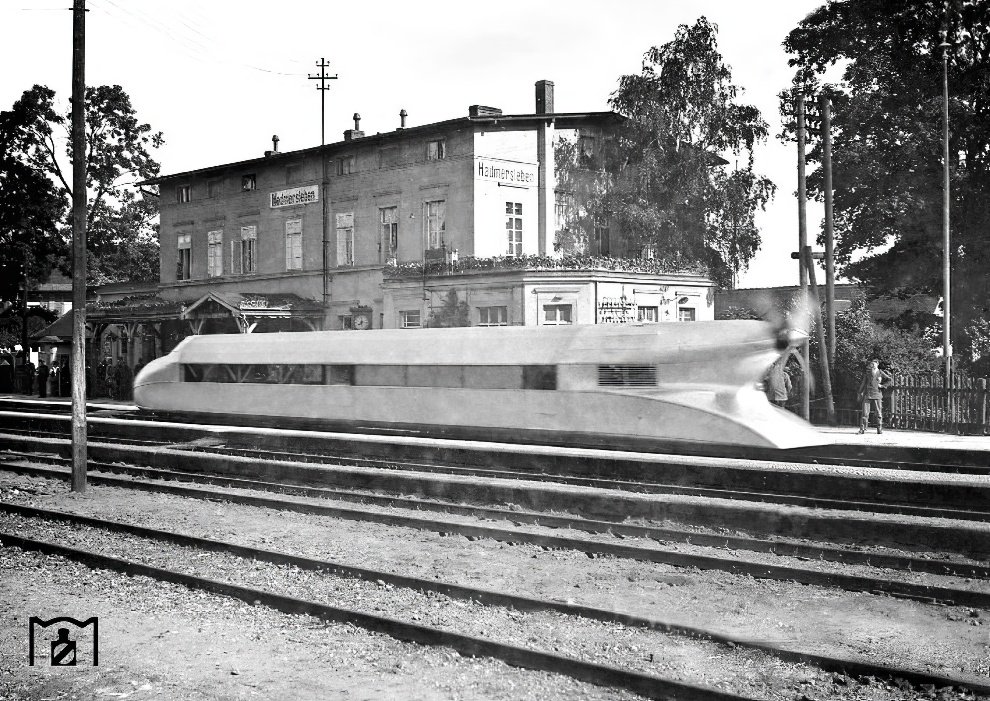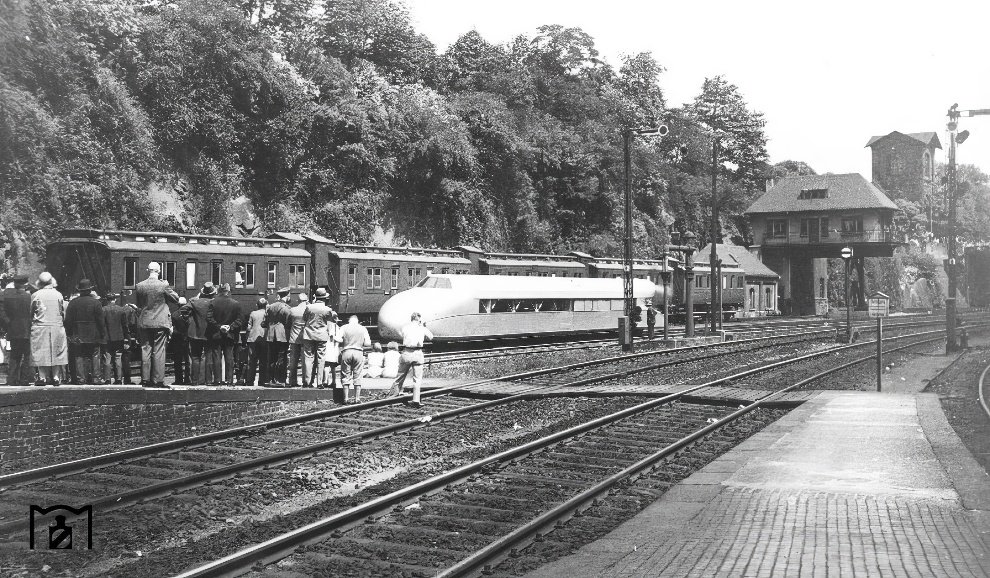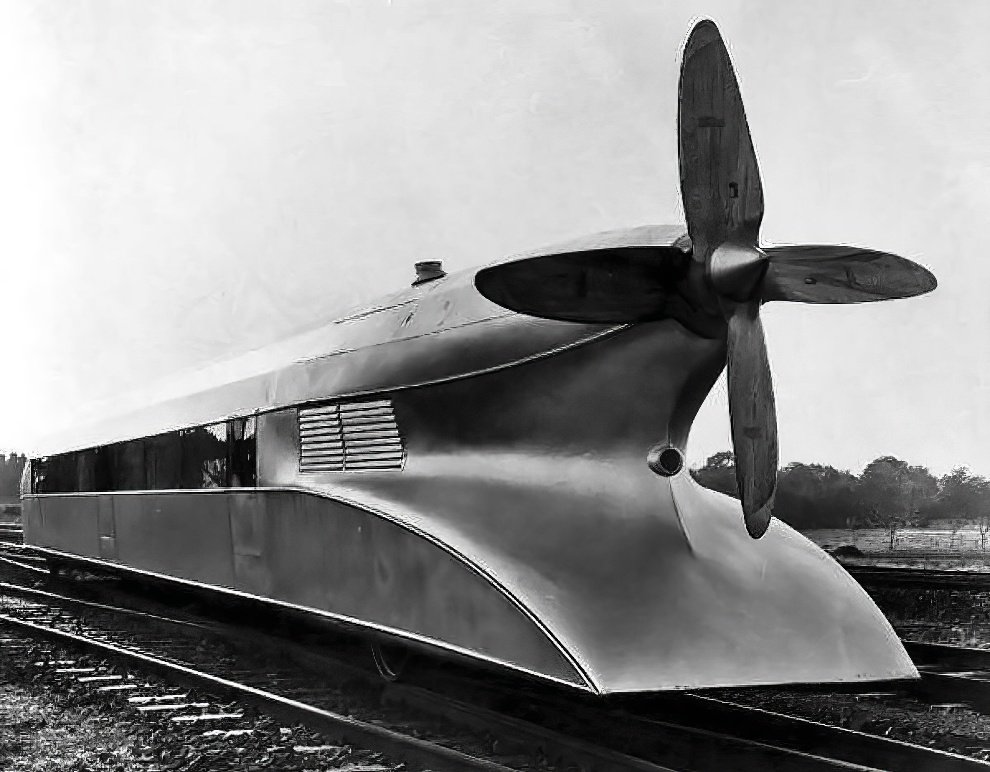
The Schienenzeppelin, an innovative railcar designed by German engineer Franz Kruckenberg in 1929, was a groundbreaking experiment in high-speed rail travel. Resembling a Zeppelin airship, this unique vehicle was powered by a rear-mounted pusher propeller, propelling it to a remarkable top speed of 230.2 km/h (143 mph). This remarkable feat set a new land speed record for petrol-powered rail vehicles, showcasing the incredible potential of this futuristic design. Despite its impressive speed and cutting-edge technology, only one prototype of the Schienenzeppelin was ever built, and it faced safety concerns that ultimately led to its dismantling in 1939.
Drawing inspiration from the Russian Aerowagon, which also utilized an aircraft engine and propeller for propulsion, the Schienenzeppelin was a marvel of engineering and design. Constructed in early 1930 by the German Imperial Railway Company, this sleek railcar featured a streamlined aluminum body measuring 25.85 meters in length. Initially equipped with two BMW IV 6-cylinder engines, it was later upgraded to a single BMW VI 12-cylinder engine for improved performance. The Schienenzeppelin made its mark in history on May 10, 1931, when it surpassed 200 km/h for the first time, capturing the attention of the public across Germany.
h/t: vintag.es
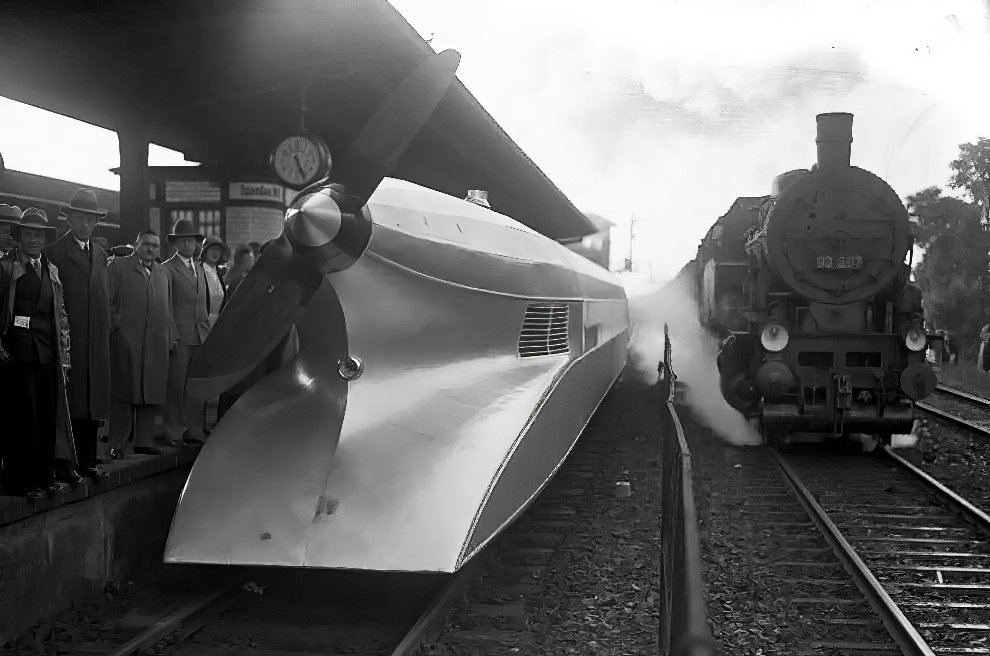
One of the most significant achievements of the Schienenzeppelin came on June 21, 1931, when it set a world railway speed record on the Berlin–Hamburg line. This incredible milestone solidified its place in the annals of transportation history, showcasing the revolutionary capabilities of Kruckenberg’s design. In 1932, Kruckenberg further enhanced the railcar by adding a new front end with a two-axle bogie and hydraulic power transmission, pushing the boundaries of speed and efficiency in rail travel.
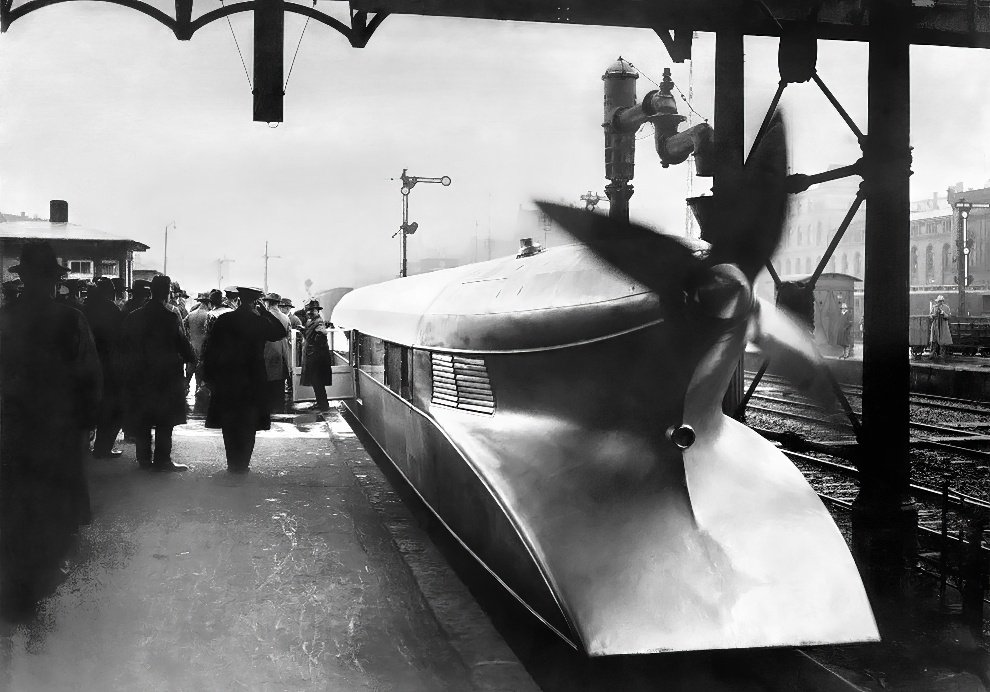
Despite its remarkable performance and groundbreaking design, the Schienenzeppelin faced challenges that ultimately limited its practicality. Issues such as its open propeller design and inability to pull additional wagons hindered its widespread adoption for regular service. In response, the Deutsche Reichsbahn developed the Fliegender Hamburger in 1933, incorporating many of Kruckenberg’s innovative ideas while addressing the limitations of the Schienenzeppelin. This new train, designed for practicality and efficiency, signaled the end of the line for the iconic prototype.
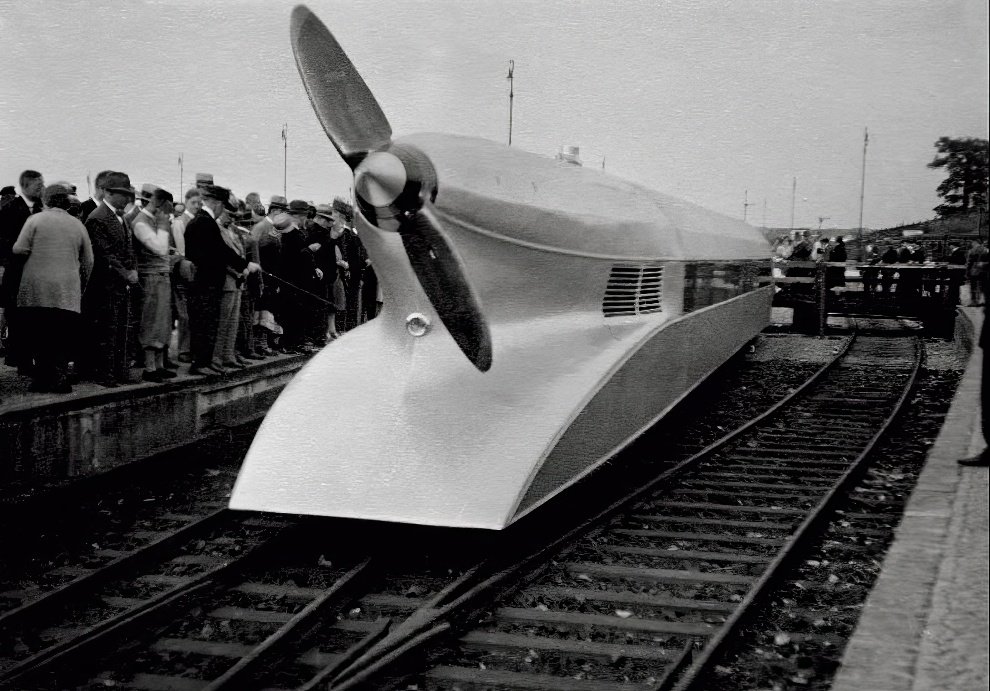
While the Schienenzeppelin may have been dismantled in 1939, its legacy lives on as a testament to the ingenuity and vision of its creator. With its record-breaking speed and futuristic design, this experimental railcar paved the way for advancements in high-speed rail travel, inspiring generations of engineers and designers to push the boundaries of what is possible in the world of transportation.
